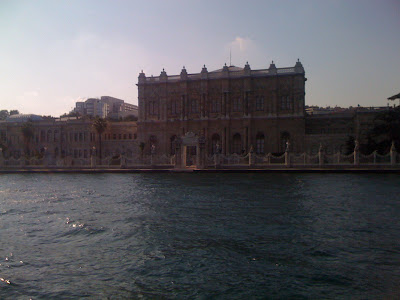The Night Market on the Tiber river is one of Rome's busiest spots. In line with the small, family-owned business sense that makes a large part of Rome's economy, the Night Market is home to an array of small businesses. These businesses include a multitude of different entertainment items, more inline with something one would see at a carnival or fair. One could sample dried fruits at one shop, walk ten feet and play an electronic soccer game for a prize, and walk another ten feet and be seated right on the edge of the river with friends for food and drinks (even sushi!). Although the Tiber river was such an uninhabitable place for so many years, Romans were quick to integrate this central river into its bustling and busy nightlife.
The Bosphorus is home to some of the most lavish palaces and and mosques in all of Istanbul. Over the years, Ottoman sultans have looked to the waterway to build their extravagant summer palaces. As Turkey became secular and more modernized since the 19th and 20th centuries, the Bosporus has become home to prominent businessmen building their modern mansions right alongside the homes of their former leaders. Now on both the Asian and European sides mosques, palaces, mansions, and markets sit alongside each other, a prominent display of Turkey's wealth, modern sensibilities, and Islamic roots.
Rome and Istanbul's major waterways, the Tiber River and the Bosphorus Strait, are crucial to understanding not only the culture of the two cities, but also the history. For Romans, the Tiber acts as an extensions of the small business sense and lively nightlife that are the custom and have been for years. For Istanbulians, years of growth along the river, combined with modernization, have led to the Bosphorus being a grand display of wealth and power, from the Ottomans to today's leaders.

